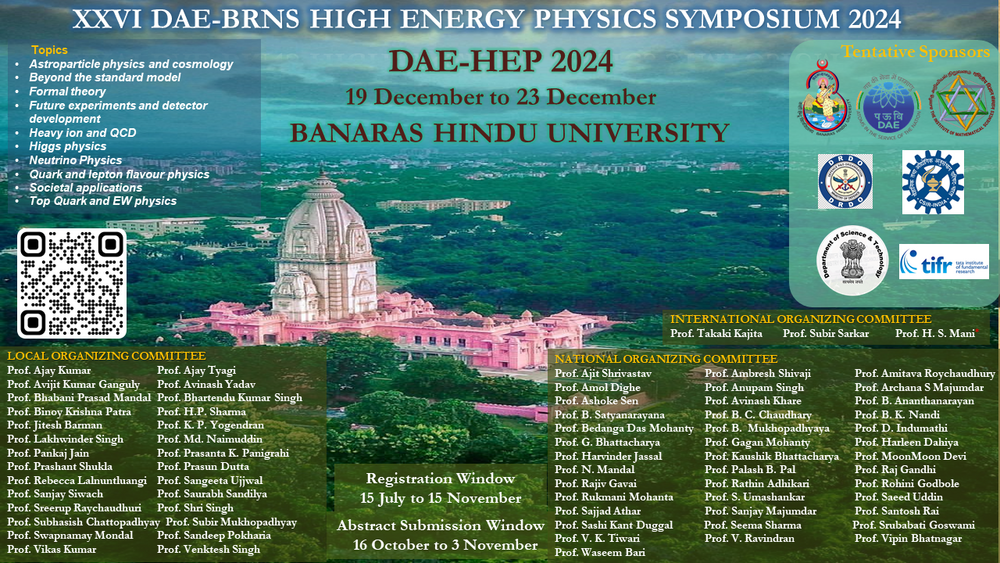Speaker
Description
In the Standard Model (SM), flavour-changing neutral-current (FCNC) decays in the charm sector are highly suppressed since they do not occur at the tree level due to the Glashow-Iliopoulos-Maiani (GIM) mechanism. So we can perform several phenomenological studies in these decays to look for new physics (NP). Here, we shall analyse the rare charm baryon decay $\Lambda_c→p\mu^+ \mu^-$ in the non-universal $Z'$ model. In non-universal $Z'$ model, rare FCNC decays can occur at the tree level, facilitated by the new $Z'$ gauge boson. This $Z'$ particle introduces interactions that differ across generations of quarks and leptons, bypassing the usual SM suppression mechanisms and allowing these rare decays to happen more readily. As per the recent results from LHCb collaboration the upper limit on the branching fraction of the $\Lambda_c→p\mu^+ \mu^-$ decay is determined to be $2.9 (3.2)×10^{-8}$ at $90\%$ (at $95\%$ ) confidence level [1]. With the inclusion of long distance processes involving intermediate vector-meson resonances the result can be enhanced up to $10^{-6}$. In this work, we will calculate the branching fractions and forward-backward asymmetries within the $Z'$ model framework and then compare these results with their corresponding values predicted by the SM. We shall follow the phenomenological approach of Refs. [2-5] for our analysis. We hope our results will provide some information about new physics in the above decay.
References
1. R. Aaij et al. (LHCb collaboration), Search for the rare decay of charmed baryon $\Lambda_c^+$ into the $pμ^+ μ^-$ final state, Phys. Rev. D 110, 052007 (2024) [arXiv:2407.11474 [hep-ex]].
2. S. Meinel , $\Lambda_c→N$ form factors from lattice QCD and phenomenology of $\Lambda_c→nl^+ \nu_l$ and $\Lambda_c→p\mu^+ \mu^-$ decays, Phys. Rev. D 97, 034511 (2018)[arXiv:1712.05783 [hep-ph]].
3. M. Golz, G. Hiller and T. Magorsch, Probing for new physics with rare charm baryon $(\Lambda_c,\Xi_c,\Omega_c)$ decays, JHEP 09, 208 (2021) [arXiv:2107.13010 [hep-ph]].
4. S. Sahoo and R. Mohanta, New physics effects in charm meson decays involving $c→ul^+ l^- (l_i^± l_j^∓)$ transitions, Eur. Phys. J. C 77, 344 (2017) [arXiv:1705.02251 [hep-ph]].
5. S. Navas et al., The Review of Particle Physics (2024), Phys. Rev. D 110, 030001 (2024).
| Field of contribution | Phenomenology |
|---|

